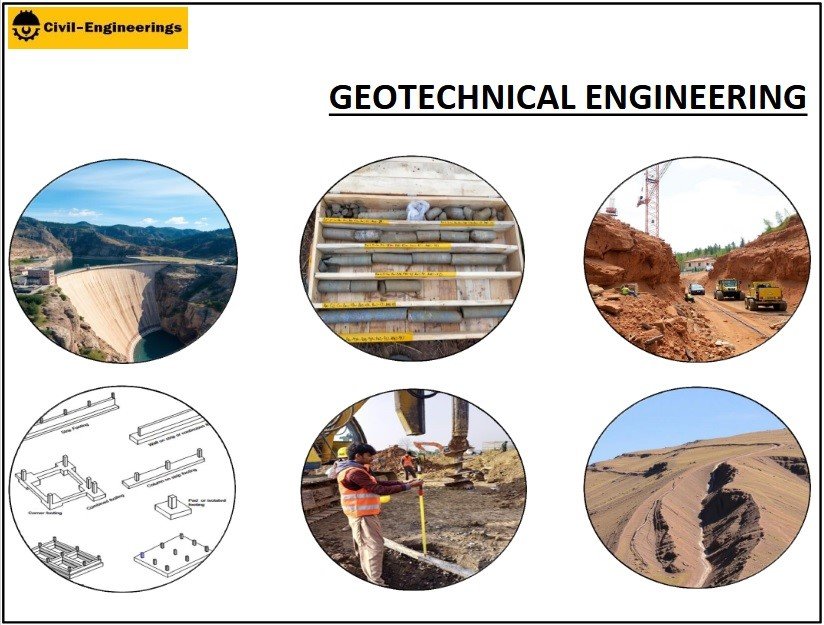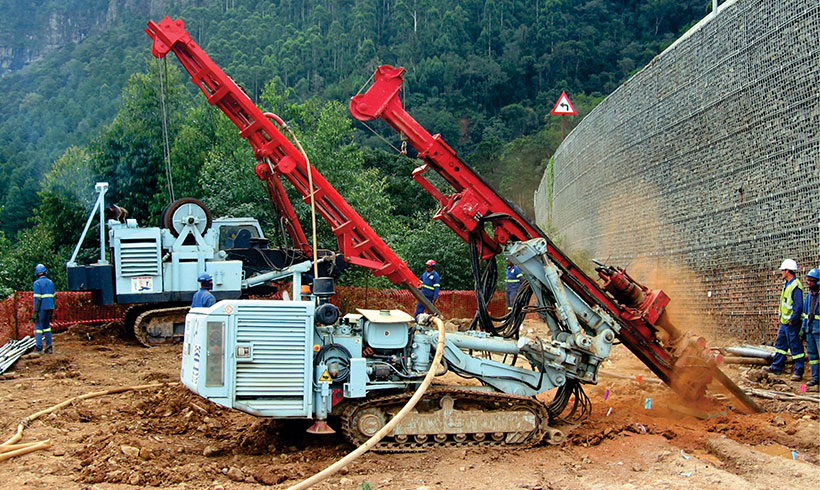The Definitive Guide to Specialized Geotechnical Engineering Solutions
Table of ContentsThe 7-Minute Rule for Specialized Geotechnical Engineering SolutionsSpecialized Geotechnical Engineering Solutions Things To Know Before You BuyGetting My Specialized Geotechnical Engineering Solutions To WorkSpecialized Geotechnical Engineering Solutions Things To Know Before You Buy
They carry out website investigations, gather samples, execute lab examinations, and analyze information to evaluate the viability of the ground for construction jobs. Based upon their findings, geotechnical designers give suggestions for structure layout, slope security, keeping structures, and reduction of geotechnical threats. They team up with other specialists, such as architects, structural engineers, and building groups, to ensure that geotechnical considerations are integrated into the general task design and application.
Foundation Style: Geotechnical designers play a vital function in making foundations that can safely support the designated structure. They examine the dirt conditions and load demands to establish the appropriate foundation type, such as superficial structures (e.g., footings), deep foundations (e.g., stacks), or specialized strategies like dirt enhancement. They think about aspects such as negotiation restrictions, birthing ability, and soil-structure interaction to develop optimum foundation styles.
Not known Details About Specialized Geotechnical Engineering Solutions
Below are some kinds of geotechnical engineers: Foundation Engineer: Structure designers focus on developing and analyzing structures for frameworks - Specialized Geotechnical Engineering Solutions. They evaluate the soil problems, tons requirements, and website attributes to identify one of the most proper foundation kind and style, such as shallow structures, deep foundations, or specialized strategies like stack foundations
They perform field screening, collect examples, and examine the collected data to identify the dirt homes, geologic formations, and groundwater problems at a website. Geotechnical Instrumentation Designer: Geotechnical instrumentation designers focus on monitoring and measuring the behavior of dirt, rock, and structures. They install and preserve instrumentation systems that keep track of variables such as soil negotiation, groundwater degrees, slope activities, and architectural variations to evaluate efficiency and provide very early cautions of potential problems.
In the workplace environment, geotechnical designers use specialized software tools to execute calculations, produce layouts, and analyze data. Specialized Geotechnical Engineering Solutions. They prepare records, review job requirements, connect with clients and group participants, and coordinate project activities. The workplace setup provides a favorable setting for study, analysis, and partnership with various other professionals included in the project
They frequently check out task sites to conduct site examinations, analyze geotechnical conditions, and collect information for analysis. These sees entail traveling to various locations, often in remote or tough terrains. Geotechnical engineers may do dirt sampling, conduct tests, and screen building and construction tasks to make sure that the geotechnical aspects of the task are being executed correctly.
3 Simple Techniques For Specialized Geotechnical Engineering Solutions
Geotechnical designers likewise work in specialized geotechnical laboratories. In these centers, they carry out experiments, carry out see page examinations on dirt and rock samples, and analyze the design residential or commercial properties of the materials. Geotechnical research laboratory designers work extensively in these settings, managing screening devices, operating instruments, and recording data. They team up with other lab staff to guarantee precise and trustworthy screening outcomes.
Retaining Wall surfaces: Creating walls that hold back dirt to avoid landslides and supply stability on sloped terrains. Embankments and Earthworks: Creating embankments for roadways, railways, and dams to guarantee they continue to be stable under anxiety. The mining sector relies greatly on geotechnical design to ensure the security and long life of its procedures.
With this in mind, we have designed our program to prepare students for success. Geotechnical engineers are involved in all phases of the layout of frameworks, from idea to construction. Their work is important in the design and preparation procedure as they examine the honesty of soil, clay, silt, sand, and rock, prior to construction beginning.
Some Known Details About Specialized Geotechnical Engineering Solutions
This is adhered to by a ground investigation based upon the findings of the desk study and includes test pitting and sampling to reveal any kind of potential problems. Geotechnical designers work within multidisciplinary teams, supported by intermediate and younger designers as well as by CAD service technicians. As a senior geotechnical designer on a hydro plant project, tasks might consist of participating in technological evaluations (e.g., peer testimonials), tailings clog evaluations, dam security testimonials, and other studies connected to the layout and building and construction of mine waste facilities.
While some specialists are experts solely in geotechnics, others may work under titles like design rock hound or ground engineer within similar capacities. As a geotechnical designer, you'll require to: develop and keep partnerships with customers and various other professionals associated with the site, throughout each projectmaintain security requirements on site bear in mind cost implications when you make recommendationsstudy geological maps home and aerial photographs from a variety of sources and from different time periodsexamine construction plans to see how viable they are based upon your understanding of the siteinvestigate risks or geological hazards for the sitesearch for eco delicate attributes, such as land fill begin to establish factual and interpretive ground modelsplan area investigationsdrill and evaluate examples of bedrock, dirt, groundwater and extra materials monitor other professionals on sitesolve technological concerns as they arise, such as unanticipated frameworks at drill sitesmonitor problems during and after building to ensure structures are stable in the brief and lengthy termadd information gathered on website to your initial researchcreate geotechnical calculations, drawings, and 2 or three-dimensional computer system designs translating the datamake suggestions regarding the suggested use of the site.
There are great deals here of opportunities to meet new individuals, as you'll deal with a range of professionals at every site. The job can be demanding as you may be accountable for the security of others while on site. There is likewise a high level of economic responsibility, as the suggestions you make can have serious expense implications.
